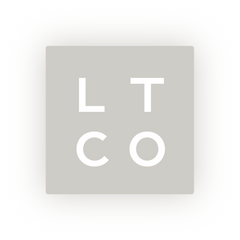A Guide to Skincare Minimalism
Written by Tash Havos
Little Company's Ingredient Researcher and Product Specialist
“Simplicity, clarity, singleness: These are the attributes that give our lives power and vividness and joy as they are also the marks of great art.”
— Richard Holloway
We like to consider minimalism as an intentional art of owning less. A way to escape the excesses of the world around us – the excess of modern mania, material possessions, clutter, having too much to do, too much debt, too many distractions, too much noise. It’s a way of forgoing the non-essential to create more space and more freedom. Freedom from the trappings of the consumer culture we’ve built our lives around. It does not mean, however, that material possessions are therefore inherently ‘bad’. It means that looking through a minimalist lens creates space for intention; deliberate choices and conscious purchases.
The mantra of ‘less is more’ still obeys a logic of accumulation–but it hints at a different perspective.
As of many moons ago, the glorification of what it means to own particular brands equated to status. The modern, connected and information-age of today says that buying skincare is not so different. Introducing the ever-popular trend on Instagram –The Shelfie. As we know, the popular ‘selfie’ was the first rendition of influencers on Instagram showcasing themselves to gain social status–and as transparency blew that cover, we all realised that it wasn’t real life after all. Fast forward a couple of years, we introduce the shelfie as a replacement, perhaps one with more perceived humility? This one heroes skincare; celebrating new products with buzzword ingredients and design-focused packaging. It was a new way for influencers and every-day people to communicate their perceived identity through possessions, causing brands to propel into and perpetuate the hype in order to gain social capital.
Throughout this trend, we were reminded of the dangers of overconsumption. For our earth– where would all these bottles go? For the skin– how could it tolerate all these different formulas on a daily basis? And for the products themselves–how would one even use them all? It didn’t take long for the skin experts to voice their concerns around the growing trend of people playing ‘at-home chemist’. Not only because it’s absolutely wasteful, but for the mere fact that no one could guess what product was actually working for their skin. (side note: If you’re about to Marie Kondo your skincare, please don’t throw anything out. If you’ve got products you know you won’t use, give them to a friend or donate them to charities like Share the Dignity or Support the Girls).
However, you don’t have to identify with hoarding skincare to understand the implications of product dependence. As the ever-blurred line between skin-care and self-care grows, it can also encourage one’s emotional dependence to skincare products and the sentiment they hold. Perhaps fears of breakouts if one or two steps are missed, or overusing a product because it may appear to be ‘working’, when in fact, the overuse burdens the skin and its inherently natural function. Much in the same way we support our internal organs with a balanced diet and possibly supplementation, or manage our stress levels with adequate sleep and a slower-paced routine, our skin is no exception. It’s smart, and while it can tolerate hormonal imbalances, environmental stressors, make-up, pollution, (the list goes on), it doesn’t need further complications brought on by product overuse and dependence.
It’s absolutely possible to cultivate a skincare routine that applies the minimalist’s principle of intention. Start by defining conscious beauty for yourself. It could be as simple as asking yourself what you want your products to do for you, or what ethics you align with and how that reflects in the brands you choose to invest in. Learn what your skin’s stress response is, emotionally and environmentally. Record any changes throughout your cycle. This exercise is particularly helpful in understanding how your elimination channels are functioning as the skin is usually the last communication channel. It’s invaluable information to practitioners that are treating you internally and externally, and wades out the products that are unnecessarily part of your routine.
By virtue of setting intentions and consciously caring for your skin, there is no room for extra noise, yet only power to you and your health.


